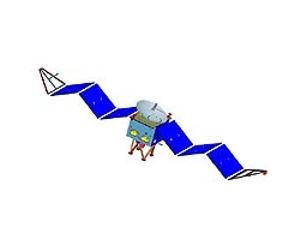
Mars Orbital Insertion will be a significant achievement for China's growing space science program. |
As China's second Moon probe continues its mission, more information is being disclosed about China's ambitions for worlds beyond.
China has made no secret of its plans to explore Mars, but we are getting a firmer indication of what to expect.
Vague statements in the Chinese media have suggested that China could launch a mission to Mars in 2013. This is an interesting suggestion for a program that's still largely unknown to us. How does this add to our knowledge of China's Mars program?
China's first planned step to Mars is very well known. In 2011, the Yinghuo 1 orbiter will be launched to Mars in tandem with Russia's Phobos-Grunt mission. We know a lot about Yinghuo 1 already, thanks to some fairly open publicity about the mission. Yinghuo 1 is a small orbiter, which will enter a highly elliptical orbit around Mars.
Its main role is to study the tenuous Martian atmosphere, and help to answer one of the greatest mysteries surrounding the planet. Long ago, the atmosphere of Mars was much thicker, helping to produce almost Earthlike conditions on the surface. Why did Mars change into the barren world of today, and why did most of the atmosphere disappear?
Roughly two years after Yinghuo 1 is launched, a new "launch window" will open between Earth and Mars, as the position of the planets becomes favourable again. NASA plans to send an orbiter during this window, and it will also study the Martian atmosphere. Could China be ready to fly again so soon?
There are plenty of reasons to believe that China could do it. Consider recent events. China has successfully carried out a long mission in deep space. The Chang'e 1 mission was China's first lunar orbiter. Launched in 2007, the spacecraft performed well in mapping the entire Moon.
China has followed this with the launch of Chang'e 2 just a few weeks ago. This spacecraft is essentially a copy of Chang'e 1, with different instruments and some improvements to its sub-systems. Chang'e 2 is performing very well, and has navigated successfully into a low lunar orbit. Chinese space engineers must feel pleased. They've developed a generic spacecraft design and proven that it works well, on two flights out of two.






No comments:
Post a Comment